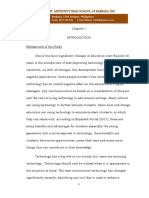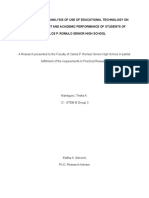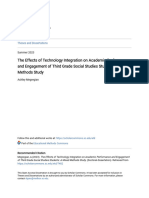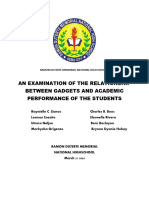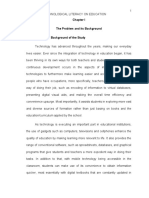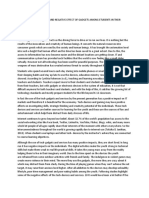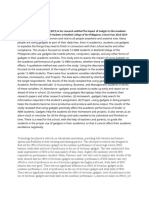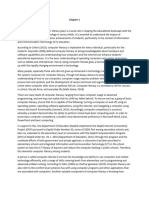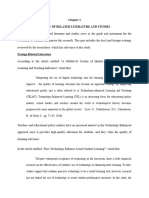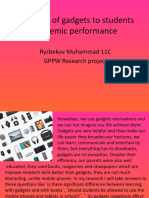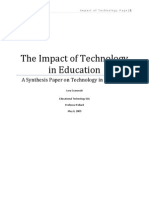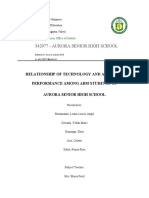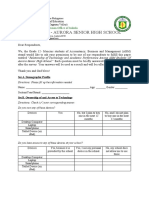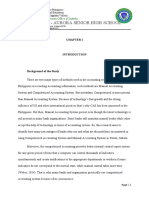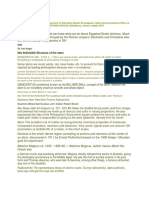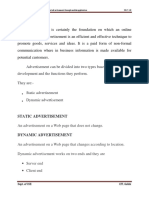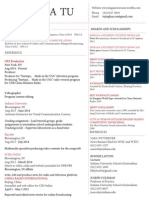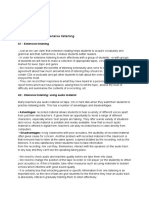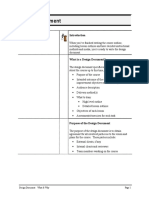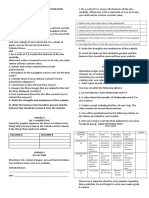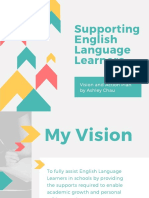A.
Related Literatures
Technology is a recent marvel in our everyday life that has taken off. Technology allows the most
difficult tasks to become seamlessly easy and more efficient. In education, technology has allowed the
dissemination of knowledge to be dispersed instantly and it allows for quicker and more effective
communication. Also, technology has allowed students to be engaged and learn in ways that they never
have in classroom setting before. Technology in the world of education has been ever changing. Most
recently, technology has been a new phenomenon to help motivate, differentiate, and allow students to
achieve and excel in ways that they have never been able to before.
Technology has advanced rapidly (perhaps more rapidly than many in the field expected) over the last
few years and there have been literally hundreds of published studies investigating its educational effect.
Although there might not yet be a definitive conclusion since it is becoming apparent that the type of
learning that technology best enhances is difficult to quantity (Johnson, 1996) there are many research
reports that indicate we now have a deeper understanding of how to maximize the benefit to learners
through a variety of technology rich educational environments. Hopefully there is no longer any need for
the impatient premise that the value of technology is self- evident since there is now a more significant
body of research findings which support its usefulness. These studies also help us answer the important
question: useful for what?
With regard to the earlier issue regarding the relevancy of technology in education, most of the more
current literature is overwhelmingly positive about the potential of a variety of technologies to be
powerful components in accomplishing current educational visions. Such visions include helping students
“develop a broad, deep, and creative understanding of community, culture, economics and international
politics, past and present, and acquire the social skills to work across differences and distances” (Riel,
1993) “an array of tools for acquiring information and for thinking and expression (allowing) more
�children more ways to enter the learning enterprise successfully. These same experiences provide the
skills that will enable students to live productive lives in the global, digital, information-based future they
all face” (Dwyer, 1994)
“According to Mohammed, there is a significant relationship between the use of technology and academic
performance based on the results that they have gathered. There is always an increase in the academic
achievements of the student.
“According to Wentworth, technology has a negative effect to the academic performance of the students.
The researchers found out that there is a negative effect in using technology that other did not see.
“According to Beard, the number of new technology helps the students to support and enhance learning in
public schools. Technology is used as supplemental methodologies to enhance student learning,
especially for students with disabilities. The students are given the chance to explore more and discover
new things by the use of technology.
“According to Ishernhagen, technology is the major catalyst for an increase in learning. Staffs and
students are encouraged to interact with the content.
According to Schacter, there are five large-scale studies of education technology: (1) “Meta-Analytic
Studies of Findings on Computer-Based Instruction”(J.A. Kulik) employed a statistical technique called
meta-analysis to aggregate the results of over 500 individual studies to draw a single conclusion; (2)
“Report on the Effectiveness of Technology in Schools, 1990-1997 “(J. Sivin Kachala ) reviewed
hundreds of individual studies whereby the authors shed light on consistent patterns that emerged across
studies; (3)”Evaluating the Apple Classrooms of Tomorrow” (E.L. Baker, M. Gearhart & J.L. Herman)
reviewed a partnership between Apple and five schools across the nation; (4) “West Virginia’s Basic
Skills/Computer Education Program: An Analysis of Student Achievement” (D. Mann, et al.) reported the
result of West Virginia’s 10-year statewide education technology initiative; and (5) “Does it Compute?
The relationship between Educational Technology and Student Achievement in Mathematics” (H.
�Wenglisky) assessed a national sample of fourth and eighth-grade students using newer simulation and
higher order thinking technologies.
Technologies used to improve and facilitate learning can be found everywhere. Leaving other contextual
factors to the side such as unequal access to technological innovations and connected technologies across
schools and districts, we can only say that we have embraced technology in education when it is used for
both teaching and learning. With the incorporation of technology into schools, the main purpose is to
change how teachers and students gather, access, analyze, present and transmit information. This can
democratize information in classrooms as well as help differentiate instruction, particularly for students
with special needs. At the same time for technology to work effectively, it should be incorporated in
classroom if it is appropriate for a given instructional task. Also, technology can only be an effective
teaching tool if teachers participate in decisions to adopt technology. This is because teachers have the
responsibility of facilitating instruction and incorporating technology at the classroom level yet many
school administrators tend to make decisions related to technology adoption/ training without consulting
teachers. Overall, technology is central to many sectors of society and its integration to the education
process has great promise for student learning. With technology one can expect increased efficiency and
effectiveness on both part of teachers and students. Technology can also prompt pedagogical change and
address issues that affect learning, teaching and social organization. Technology can therefore be seen as
both a tool and a catalyst for change. Students should embrace technology for them to benefit and
teachers should be open to introducing technology into the classroom to improve and innovate their
teaching practice.
B. Related Studies
In this study, we examine data from ongoing evaluation of the distance education program for graduate
level business students in a private university. The study addresses the impact of technology-assisted
learning on academic performance among distance learners and their on-campus counterparts. The study
�further explores the relationship between academic performance and students’ technological adaptability.
The findings indicate, when adjusted for gender (females out-performed males), there were no significant
differences in academic performance between distance learners and their on-campus counterparts.
Analysis also shows no significant differences in overall academic performance between technology-
adept students and those without technological skills. These findings may remove at least some perceived
barriers in the decision to initiate distance education programs. Taradi and his colleagues (2005) found
that the use of technology positively affected learning outcomes in acid- base physiology. This finding is
very motivating, especially at the University of Dammam. It also added many benefits to the course, in
support of curricular objectives. For instance, a project- learning approach and technology tools offer
ways for students to conduct experiments, observe phenomenon, and view results in graphic ways that
can aid in understanding. Students are more likely to stay engaged and technology helps make teaching
and learning physiology more meaningful than without such opportunities. Furthermore, research has
indicated that a comparatively higher degree of students learning and effective teaching can be achieved
when the use of technology is incorporated than when it is not.
C. Synthesis
Based on the articles and studies that weve search, there is bad and good relationship between technology
and academic performance. Some of the content says that the use of technology in academic performance
has a negative effect and difficulty in using it. But on the contrary, the use technology in academic
performance has increased the academic achievement of a student who uses it.
The use of technology in more likely positive based on the other research and other studies because they
show evidences that are accurate and reliable. They can use this as an instrument to discover, learn and
explore new things not only for online gaming or internet surfing.




